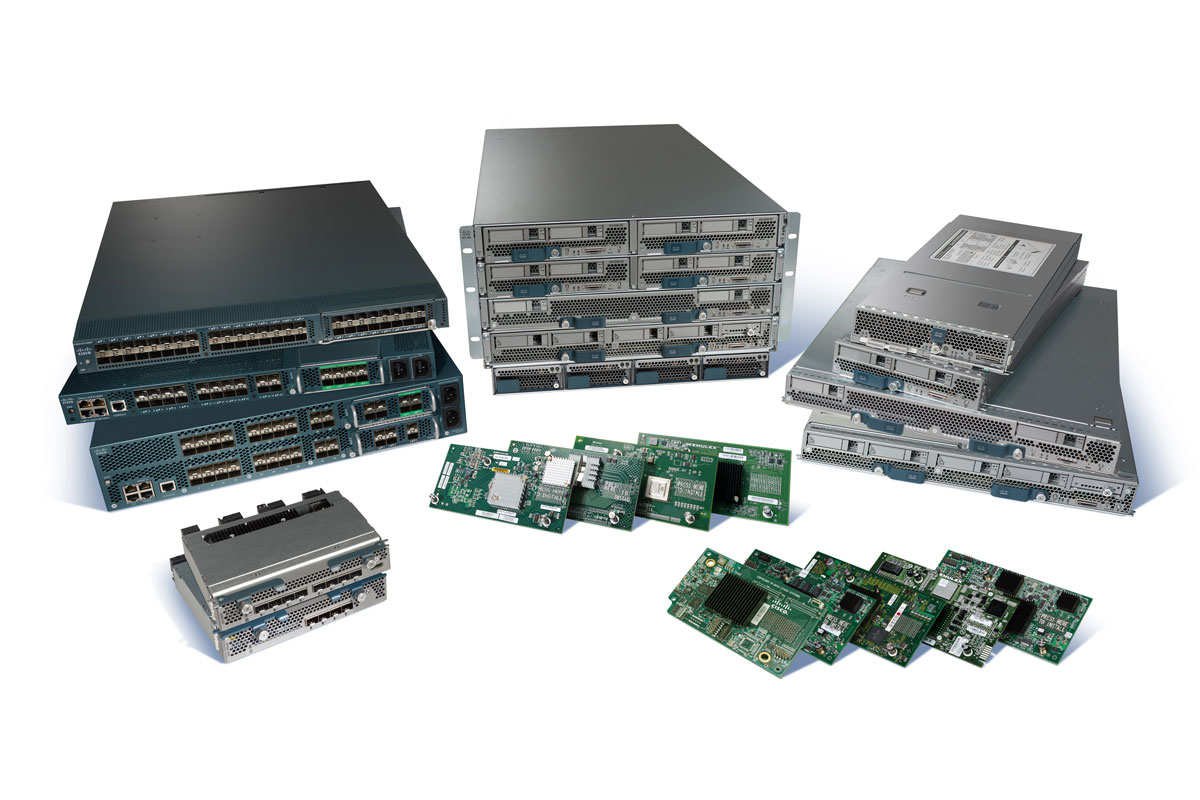Cisco's one-stop shop for cloud computing equipment
Updated UCS is better in every way claims networking giant.

Networking giant Cisco has updated its Unified Computing System for companies looking to equip and enhance their datacentres to deliver cloud computing services.
Cisco believes its Unified Computing System (UCS), a key example of 'fabric computing' or a massive concentration of infrastructure such as servers, storage and high speed links, is perfect for companies building a platform for delivering cloud services. In terms of hardware, the UCS has several key components including a parent switch and remote line cards packaged as rack-mountable devices. This is then paired with a virtual interface card that supports 256 virtual PCI Express interfaces including Ethernet, Fibre Channel and Fibre Channel over Ethernet.
Cisco claims that this dense concentration of blade servers and switches results in not only faster applications performance, but more virtual interfaces packed into a single space and less latency too.
Customers can deploy any combination of operating systems and hypervisors they wish while everything is managed from the UCS Manager unified management interface which integrates with hypervisor systems such as VMWare vCloud Director and vSphere 5.0.
Naturally the UCS would be the perfect platform for the newly updated Wide Area Application Services Software (WAAS) now at version 4.4. Cisco claims this software is an example of context-aware application performance optimisation improving the performance of demanding applications while using as little bandwidth as possible. Soni Jiandani, the senior vice president of Cisco's Server Access and Virtualisation Technology Group, gave an example of virtualised remote desktops where the intelligent caching of screenscrapes improves the responsiveness of a usually very-laggy, network intensive application.
According to Lew Tucker, Cisco's CTO for cloud computing, the new UCS is perfect for a world of multiple clouds public, private and hybrid. Organisations in wildly differing fields, such as government, health care and financial services, can build customised clouds to deal with both the specific demands of their workplaces and different regulatory issues in different jurisdictions.
Sign up today and you will receive a free copy of our Future Focus 2025 report - the leading guidance on AI, cybersecurity and other IT challenges as per 700+ senior executives
-
 Trump's AI executive order could leave US in a 'regulatory vacuum'
Trump's AI executive order could leave US in a 'regulatory vacuum'News Citing a "patchwork of 50 different regulatory regimes" and "ideological bias", President Trump wants rules to be set at a federal level
-
 TPUs: Google's home advantage
TPUs: Google's home advantageITPro Podcast How does TPU v7 stack up against Nvidia's latest chips – and can Google scale AI using only its own supply?
-
 VMware partners face more disruption with latest Broadcom changes
VMware partners face more disruption with latest Broadcom changesNews Broadcom’s latest VMware changes mean smaller partners could be pushed out
-
 Helping customers adopt a multi-cloud infrastructure and accelerate their modernization journey
Helping customers adopt a multi-cloud infrastructure and accelerate their modernization journeySponsored Content We outline what shifting to a subscription model means for your business
-
 There’s a ‘cloud reset’ underway, and VMware Cloud Foundation 9.0 is a chance for Broadcom to pounce on it
There’s a ‘cloud reset’ underway, and VMware Cloud Foundation 9.0 is a chance for Broadcom to pounce on itNews With new security features and cost management tools, Broadcom wants to capitalize on surging private cloud adoption rates
-
 Broadcom's 'harsh' VMware contracts are costing customers up to 1,500% more
Broadcom's 'harsh' VMware contracts are costing customers up to 1,500% moreNews An ECCO report says Broadcom hasn't solved customer complaints when it comes to licensing and contracts
-
 Broadcom records huge growth as CEO Hock Tan hails “successful integration” of VMware
Broadcom records huge growth as CEO Hock Tan hails “successful integration” of VMwareAnalysis The VMware acquisition is finally paying dividends for Broadcom
-
 Broadcom EMEA CTO claims the company has been able to solve most of its customer issues following VMware acquisition
Broadcom EMEA CTO claims the company has been able to solve most of its customer issues following VMware acquisitionNews Joe Baguley says the firm has been walking customers through license changes and explaining the value of VMware
-
 Cloud repatriation may be nipping at hyperscaler market share, but it’s a boon for VMware
Cloud repatriation may be nipping at hyperscaler market share, but it’s a boon for VMwareNews The firm’s private cloud offerings put it in a strong position to aid customers moving workloads out of the public cloud – but repatriation can’t be the only conversation
-
 VMware Explore 2024 live: All the news and updates as they happen
VMware Explore 2024 live: All the news and updates as they happenLive Blog ITPro is live on the ground in Barcelona for VMware Explore 2024 – keep tabs on all the news, updates, and announcements in our rolling coverage